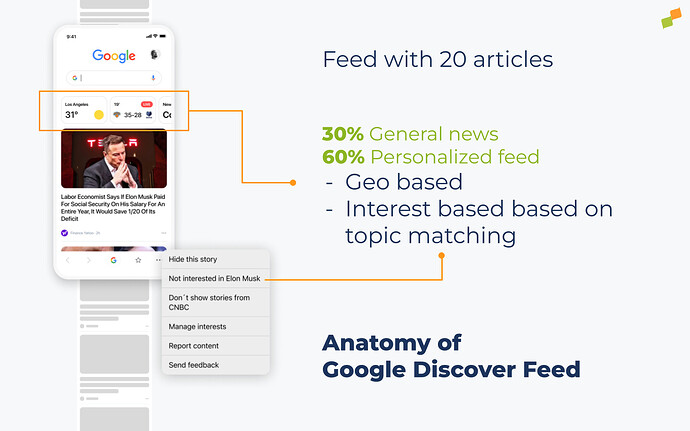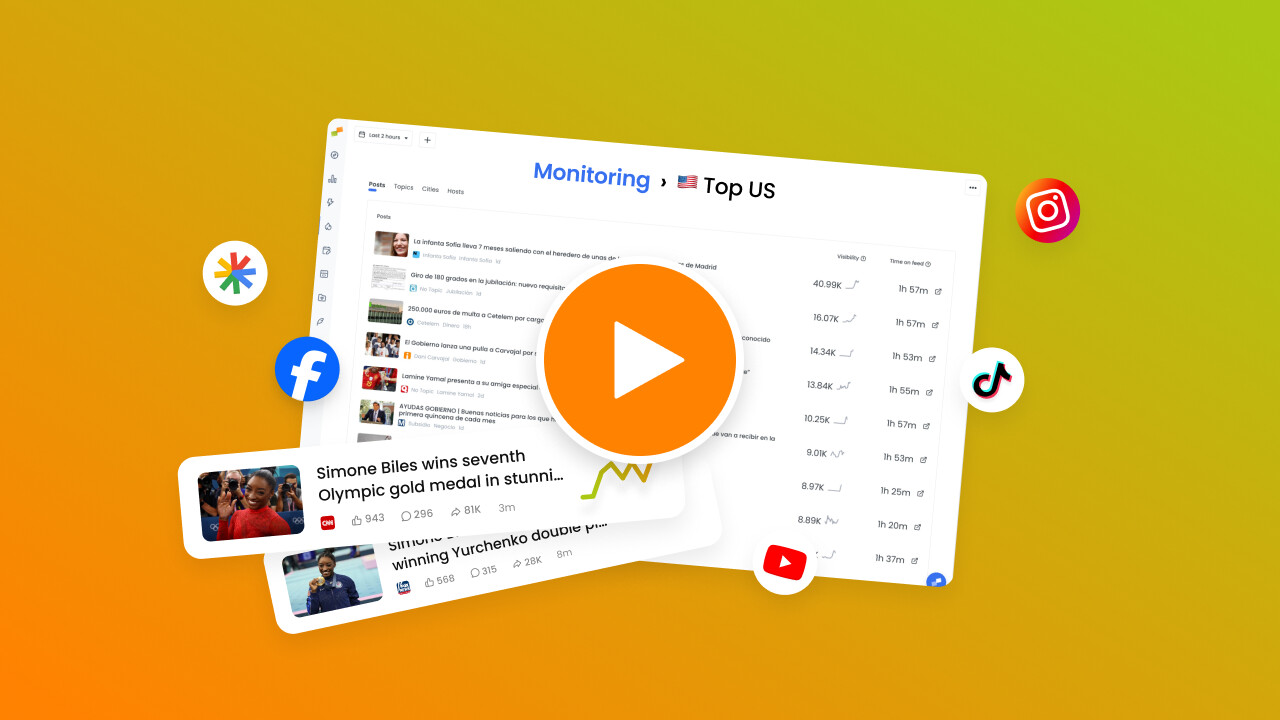Marfeel periodically collects the Google Discover feed from hundreds of cities around the world, consolidates the information in real-time, and makes it available for lightning-fast and in-depth exploratory analysis.
Marfeel Monitoring does not have access to the exact number of times an article is displayed on the Google Discover feed or its total page views. Instead, Marfeel relies on a calculated visibility score as a proxy metric to page views. The visibility score is directly correlated to how long an article is displayed and its position within the feed. The higher up in the feed an article appears and the longer it stays, the more visibility and thus page views it gets.
Marfeel also detects the topics of a post using Google’s own classification, allowing users to see high interest, niche, or seasonal topics.
The anatomy of Google Discover
The Google Discover feed typically features 20 articles and offers a highly personalized experience tailored to individual user preferences and location. The composition of the feed typically consists of:
- 40% of the content focuses on general interest topics that appeal to a wide audience.
- 30% of the content is geo-targeted based on the user location.
- 30% of the content is user interest based.
Marfeel Discover Monitoring only has visibility of general interest and geo-targeted content. Marfeel Discover Monitoring has no visibility of content featured based on individual user interests.
The richness of the Google Discover feed may cause discrepancies between the visibility of an article on Marfeel Monitoring and its observed traffic on Marfeel Compass. As a rule of thumb:
- If an article has high visibility on Marfeel Monitoring it’s very likely it has lot of traffic on Marfeel Compass.
- If an article has lot of traffic in Marfeel Compass but it doesn’t appear in Marfeel Monitoring it means that Google Discover is featuring the article only in a certain region (reducing its visibility) and / or to certain users based on their interests. Identifying these stories will help you identify your audience’s interests.
Become a Marfeel Monitoring expert
Learn how to track trends, benchmark performance, and react in real time with our Marfeel Monitoring Course.
Actionable insights
Editorial use cases
Certificate of completion included
![]() Start now on Marfeel Academy.
Start now on Marfeel Academy.

